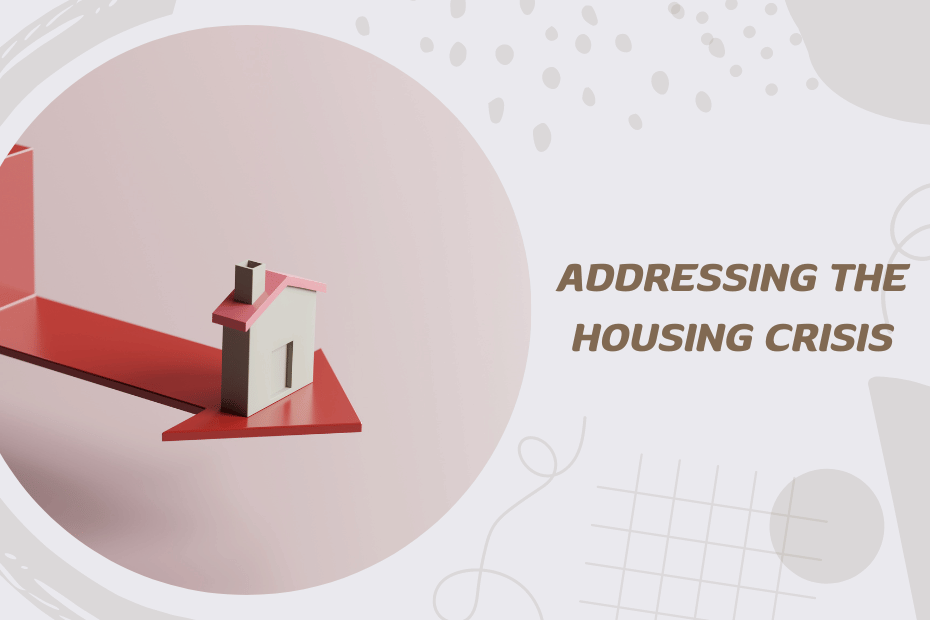The housing crisis is a significant challenge affecting millions of people worldwide. Rising home prices, a shortage of affordable housing, and increasing homelessness are just a few of the issues contributing to this crisis. However, there are innovative approaches and opportunities that can help address these challenges, one of which is the concept of Modular, Innovative, and High-Performance Housing (MIHW). In this article, we will explore how MIHW can play a crucial role in alleviating the housing crisis, discuss its benefits, and provide insights into the opportunities it presents for builders, policymakers, and communities. By the end, you’ll have a better understanding of how MIHW can contribute to solving the housing crisis and what steps can be taken to implement these solutions effectively.
Understanding the Housing Crisis
The housing crisis is a multifaceted problem driven by various factors, including population growth, urbanization, economic inequality, and inadequate housing policies. In many urban areas, the demand for housing far exceeds the supply, leading to skyrocketing home prices and rents. This makes it increasingly difficult for low- and middle-income families to afford housing. Additionally, the lack of affordable housing options forces many people into substandard living conditions or homelessness. Addressing the housing crisis requires a comprehensive approach that considers these underlying issues and seeks innovative solutions.
Economic factors also play a significant role in the housing crisis. Wage stagnation, rising construction costs, and limited access to affordable financing options further exacerbate the problem. Moreover, zoning laws and regulatory barriers often restrict the development of new housing, particularly in high-demand areas. These challenges necessitate the exploration of alternative housing solutions that can increase supply, reduce costs, and provide quality living conditions for all.
What is MIHW?
Modular, Innovative, and High-Performance Housing (MIHW) represents a new approach to construction that emphasizes efficiency, sustainability, and affordability. Modular housing involves constructing sections or modules of a building in a factory setting, which are then transported to the site and assembled. This method offers several advantages over traditional construction, including reduced construction time, lower costs, and improved quality control.
Innovative housing solutions incorporate new technologies and design concepts to create smarter, more efficient living spaces. This can include the use of sustainable materials, energy-efficient systems, and smart home technologies that enhance the quality of life for residents while minimizing environmental impact. High-performance housing focuses on creating buildings that are not only energy-efficient but also resilient, durable, and comfortable for occupants.
Benefits of MIHW
MIHW offers numerous benefits that make it an attractive solution for addressing the housing crisis. One of the primary advantages is cost efficiency. Modular construction can significantly reduce building costs by streamlining the construction process and minimizing waste. The controlled environment of a factory allows for better quality control and reduces the likelihood of construction delays caused by weather or other external factors.
Speed of construction is another major benefit. Since modules are built off-site and then assembled on-site, the overall construction time is reduced, allowing for faster delivery of housing units. This is particularly important in areas with urgent housing needs, where delays can exacerbate the crisis.
MIHW also promotes sustainability. The use of sustainable materials, energy-efficient systems, and renewable energy sources can reduce the environmental footprint of housing developments. Additionally, high-performance buildings that are designed to be resilient and durable can lower maintenance and operational costs over time, providing long-term savings for residents and developers alike.
Opportunities for Builders and Developers
The rise of MIHW presents significant opportunities for builders and developers. By adopting modular construction methods, builders can increase their efficiency and reduce costs, making it possible to deliver more affordable housing units. This can help meet the growing demand for housing in urban areas and provide viable options for low- and middle-income families.
Developers can also leverage innovative housing solutions to create unique, attractive living spaces that appeal to modern buyers and renters. The integration of smart home technologies, sustainable materials, and energy-efficient systems can differentiate their projects in a competitive market. Additionally, the reduced construction time associated with modular building can enable developers to complete projects more quickly, increasing their return on investment.
Collaboration with policymakers and community organizations can further enhance the impact of MIHW. By working together, builders and developers can advocate for changes in zoning laws and regulatory frameworks that support the development of modular and high-performance housing. This collaboration can also help identify and address barriers to implementation, ensuring that MIHW projects are successful and sustainable.
Policy and Regulatory Support
For MIHW to reach its full potential, supportive policies and regulatory frameworks are essential. Policymakers can play a crucial role in promoting modular and innovative housing solutions by updating zoning laws, streamlining permitting processes, and providing incentives for sustainable building practices. These measures can reduce barriers to development and encourage the adoption of MIHW.
Government funding and subsidies can also support the development of affordable MIHW projects. By providing financial assistance to builders and developers, governments can help offset the initial costs associated with adopting new construction methods and technologies. Additionally, public-private partnerships can facilitate the development of large-scale MIHW projects, leveraging the strengths and resources of both sectors.
Education and awareness campaigns can further promote MIHW by highlighting its benefits and showcasing successful projects. By raising awareness among stakeholders, including developers, policymakers, and the general public, these campaigns can build support for modular and high-performance housing solutions.
Community Involvement and Acceptance
Community involvement is critical to the success of MIHW projects. Engaging with residents, local organizations, and community leaders can help build support for modular and innovative housing solutions. This can include public consultations, community meetings, and workshops that provide information about the benefits of MIHW and address any concerns or misconceptions.
Building trust and acceptance within the community can facilitate the implementation of MIHW projects and ensure that they meet the needs of residents. Collaborative approaches that involve community members in the planning and design process can create more inclusive and responsive housing solutions. Additionally, showcasing successful MIHW projects and their positive impacts on communities can help build momentum and support for future developments.
Case Studies and Examples
Several successful MIHW projects around the world demonstrate the potential of modular and innovative housing solutions. For example, in Vancouver, Canada, the CitySpaces Consulting firm developed a modular housing project that provides affordable homes for low-income individuals and families. The project was completed in just six months, demonstrating the speed and efficiency of modular construction.
In the United States, the nonprofit organization New Story partnered with ICON, a construction technology company, to build 3D-printed homes for low-income families in Mexico. These homes are not only affordable but also built using sustainable materials and energy-efficient designs.
In the Netherlands, the city of Almere is home to the first modular, energy-neutral neighborhood, known as “Regen Villages.” This project combines modular construction with innovative technologies such as aquaponics, renewable energy systems, and waste-to-resource solutions to create a self-sustaining community.
These case studies highlight the versatility and potential of MIHW to address various housing challenges and provide affordable, sustainable, and high-quality living solutions.
In Conclusion
Addressing the housing crisis requires innovative and comprehensive solutions. Modular, Innovative, and High-Performance Housing (MIHW) offers a promising approach to increasing housing supply, reducing costs, and promoting sustainability. By leveraging the benefits of modular construction, adopting innovative technologies, and supporting high-performance building practices, builders, developers, and policymakers can create more affordable and resilient housing options. Community involvement and supportive policies are essential to the success of MIHW projects. By working together, we can address the housing crisis and create better living conditions for all.

Thomas J. Powell is a distinguished Senior Advisor at Brehon Strategies and a recognized figure in the realm of entrepreneurship and private equity. His journey in the financial services and banking sector, starting in 1988 in Silicon Valley, spans more than 35 years and is marked by profound industry expertise. Powell’s dual citizenship in the European Union and the United States empowers him to adeptly steer through international business landscapes. Currently studying for his Doctor of Law and Policy at Northeastern University, his research is centered on addressing the shortage of middle-income workforce housing in rural resort areas. Alongside his professional pursuits, he remains committed to community enrichment, illustrated by his 45-year association with the Boys and Girls Clubs of America. Follow Thomas J Powell on Twitter, Linkedin etc.

